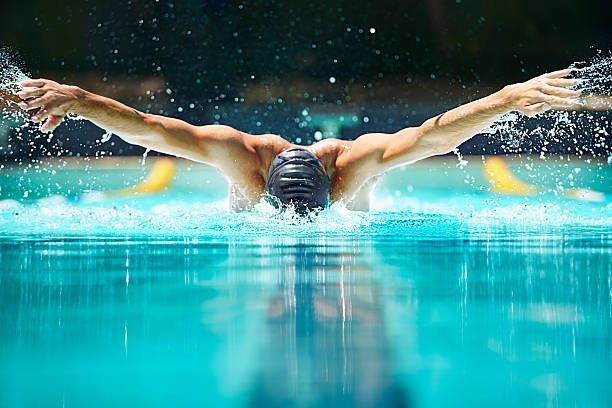Singapore, a bustling city-state in Southeast Asia, is renowned for its economic success, cultural diversity, and remarkable achievements in various fields. However, beyond its gleaming skyscrapers and culinary delights, Singapore has been making waves in a different arena – competitive swimming.
This sport, once overshadowed by other more prominent activities, has seen a surge in popularity and success over the past decade, thanks to the tireless efforts of dedicated athletes, coaches, and supportive institutions. In this article, we will delve into the world of competitive swimming Singapore, exploring its remarkable growth, notable achievements, and the factors that have fueled its emergence on the global stage.
A Decade of Remarkable Growth
Competitive swimming in Singapore has witnessed a remarkable transformation in the past decade. A sport that was once considered a niche pursuit has now become a mainstream activity, with a growing number of young talents taking the plunge into the pool. This surge in interest can be attributed to several factors.
Firstly, the government’s commitment to sports development has played a crucial role. Singapore has invested heavily in sports infrastructure, including world-class swimming facilities, which serve as breeding grounds for talented swimmers. The Singapore Sports Hub, with its state-of-the-art Aquatic Centre, is a testament to the nation’s commitment to fostering sporting talent.
The presence of the Singapore Swimming Association (SSA) has also been instrumental in nurturing competitive swimming. SSA, as the governing body, has worked tirelessly to develop talent and promote the sport. It collaborates with schools, clubs, and various stakeholders to create a conducive environment for swimmers to excel.
The strong emphasis on grassroots development is another cornerstone of Singapore’s success in competitive swimming. Various grassroots programs have been introduced to introduce children to the sport at an early age. These programs aim to instill a love for swimming and identify potential talent among young swimmers.
Notable Achievements
The efforts to popularize competitive swimming in Singapore have borne fruit with a series of notable achievements on the global stage. One name that has shone brightly is Joseph Schooling, Singapore’s swimming sensation.
Joseph Schooling’s historic victory at the 2016 Rio Olympics was a watershed moment for Singaporean swimming. He clinched the gold medal in the 100m butterfly, defeating none other than his childhood idol, Michael Phelps. This momentous win not only made Schooling a national hero but also sent ripples throughout the swimming world. It showcased Singapore’s potential to produce world-class swimmers.
Apart from Schooling, Singapore’s relay teams have made their mark in international competitions. The women’s 4x100m freestyle relay team achieved an impressive victory at the 2017 Southeast Asian Games, setting a new national record. These successes not only boost national pride but also inspire the next generation of swimmers to strive for greatness.
Factors Contributing to Success
Singapore’s ascent in competitive swimming is the result of a multifaceted approach that encompasses several key factors.
Coaching Excellence: A crucial aspect of Singapore’s swimming success is the high standard of coaching. Top-tier coaches provide expert guidance, helping athletes refine their skills and reach their full potential.
Dedicated Athletes: The success of Singapore’s swimmers can be attributed to their unwavering dedication. The grueling training regimens and rigorous schedules they follow reflect their commitment to the sport.
Supportive Ecosystem: Singapore’s swimming ecosystem, which includes clubs, schools, and associations, offers a nurturing environment for athletes. These institutions work in tandem to identify and nurture talent from a young age.
State-of-the-Art Facilities: World-class swimming facilities like the Singapore Sports Hub offer the ideal setting for swimmers to train and compete. These facilities meet international standards, helping athletes reach their peak performance.
Government Investment: The Singaporean government’s substantial investment in sports development has created an environment conducive to the growth of competitive swimming. This includes financial support, infrastructure development, and talent identification programs.
Strong Grassroots Initiatives: Grassroots programs introduce swimming to children and provide a stepping stone for aspiring athletes. This early exposure fosters a love for the sport and encourages youngsters to pursue a career in competitive swimming.
Mentorship and Role Models: Swimmers like Joseph Schooling serve as inspiring role models for the younger generation. Their achievements offer proof that Singaporean swimmers can compete on the global stage.
Challenges and the Path Forward
Despite the remarkable growth and achievements, Singapore’s competitive swimming still faces challenges. One of the primary concerns is the shortage of talented coaches. Singapore needs to invest further in coach education and development to ensure a consistent pipeline of skilled mentors for the next generation of swimmers.
Another challenge is the need for continued investment in sports science and technology. To compete at the highest level, swimmers must have access to the latest training methods and technologies. By investing in these areas, Singapore can stay at the forefront of swimming innovation.
The cost of high-level competitive swimming can be prohibitive for some families. Addressing this issue through financial support and sponsorships is crucial to ensure that talent is not lost due to financial constraints.
In the coming years, Singapore must continue to build on its achievements. This includes identifying and nurturing young talent, expanding grassroots programs, and fostering a culture of sporting excellence. Developing a strong support network for athletes and coaches is also paramount to maintain Singapore’s competitive edge.
Conclusion
Singapore’s competitive swimming journey is a remarkable story of growth, dedication, and success. The nation’s investment in infrastructure, coaching, grassroots programs, and talent development has yielded impressive results on the global stage. With role models like Joseph Schooling inspiring the next generation of swimmers, Singapore is well-positioned to continue making waves in the world of competitive swimming. The challenges that lie ahead can be addressed through continued investment and a commitment to nurturing sporting excellence. As Singapore’s swimmers continue to compete on the world stage, they not only bring honor to the nation but also inspire the dreams of future generations of athletes.





